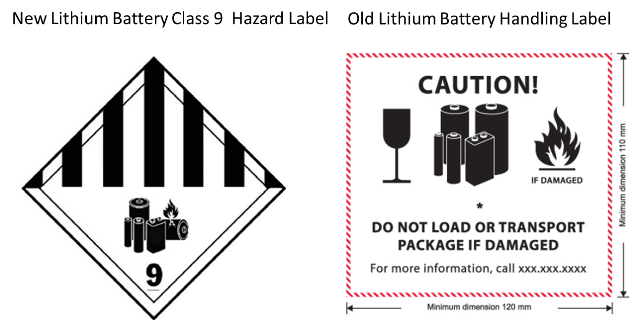Amendments to the 58th Edition IATA Dangerous Goods Regulations
Little Pro on 2016-09-25
This article is the summary of significant changes and amendments to the 58th edition IATA Dangerous Goods Regulations (DRR). The changes will come into force on 1 Jan 2017. If you ship lithium batteries, solutions containing methanol, polymerizing substances and polymeric beads, you shall not miss these changes.
Amendment to IATA 58th Edition: Classification
- A new paragraph has been added to set out the provisions for where a shipper identifies, by testing, that a listed substance has a subsidiary hazard not identified in the list of dangerous goods. The new provision identifies that the shipper must with the approval of the appropriate national authority either use a “n.o.s.” entry or ship the substance under the listed entry with the addition of the subsidiary hazard.
- New provisions have been added to address substances in Class 2, Class 3, Division 6.1 and Class 8, respectively, that may polymerize during normal conditions of transport. The provisions for the classification of polymerizing substances are analogous to those for self-reactive substances.
Amendment to IATA 58th Edition: Dangerous Goods List
- all entries of “engines” have been deleted from UN 3166. UN 3166 in Class 9 now only applies to the proper shipping names “vehicles”. Engines are now assigned to UN 3528—UN 3530 in Division 2.1, Class 3 or Class 9, based on the classification of the fuel that powers the engine. Also assigned to UN 3528—UN 3530 are proper shipping names for “machines”, which are also based on the classification of the fuel used to power the machines;
- UN 3480, Lithium ion batteries has been amended to show “forbidden” across columns I/J to identify that these batteries are now restricted to Cargo Aircraft Only. This change became effective 1 April 2016. There is no change to the entries for UN 3481, lithium ion batteries packed with equipment or lithium ion batteries contained in equipment.
- all entries for lithium batteries, UN 3090, UN 3091, UN 3480 and UN 3481 have been revised to identify that the hazard label has changed to now be the lithium battery Class 9 label (see example below). A new Special Provision A206 has also been assigned to reinforce this new requirement;
- UN 3269, Polyester resin kit has been revised to add “liquid base material” as light type and a new entry “UN 3527, Polyester resin kit, solid base material” in Division 4.1 has been added to provide for polyester resin kits that have a Division 4.1 solid material as the base component;
- four new entries, UN 3531—UN 3534 have been added for polymerizing substances;
- the entries UN 2977, Radioactive material, uranium hexafluoride fissile and UN 2978, Radioactive material, uranium hexafluoride, non-fissile or fissile excepted have now been assigned a subsidiary risk of Division 6.1 in addition to Class 8;
- UN 3507, Uranium hexafluoride, radioactive material, excepted package, less than 0.1 kg per package, non-fissile or fissile-excepted, has been revised to now be assigned to Division 6.1 with subsidiary risks of Class 7 and Class 8. The packing instruction assigned is now PI 603.
Amendment to IATA 58th Edition: Other Provisions
- Special provision A21 and A134 have been revised to address the changes to UN 3166 and the new entries for engines and machinery.
- Special provison A104, which was assigned to UN 1230, Methanol, and which allowed packages containing methanol to not bear a Toxic hazard label, been deleted. All packages containing methanol must now bear a Division 6.1 hazard label in addition to the Class 3 label.
- A204 is a new special provision assigned to Polymeric beads that identifies under what circumstances polymeric beads can be considered to be non-dangerous goods.
- P7.1.5.5 are the new provisions that set out the requirements for the lithium battery mark. The specification of the lithium battery mark is given below. The new mark comes into effect as of 1 January 2017 with a 2-year transition period during which time either the lithium battery mark or the lithium battery handling label may be applied to packages

Reference
Having Questions?
We do not provide consultancy services. If you have questions or need any help, please contact our sponsor. You may also find an expert in CSP business directory below. If you are a consultant, you may get yourself listed in CSP business directory (free) or sponsor this page to leave your contact info on this page..

Tags: Topics - TDG, Dangerous Goods